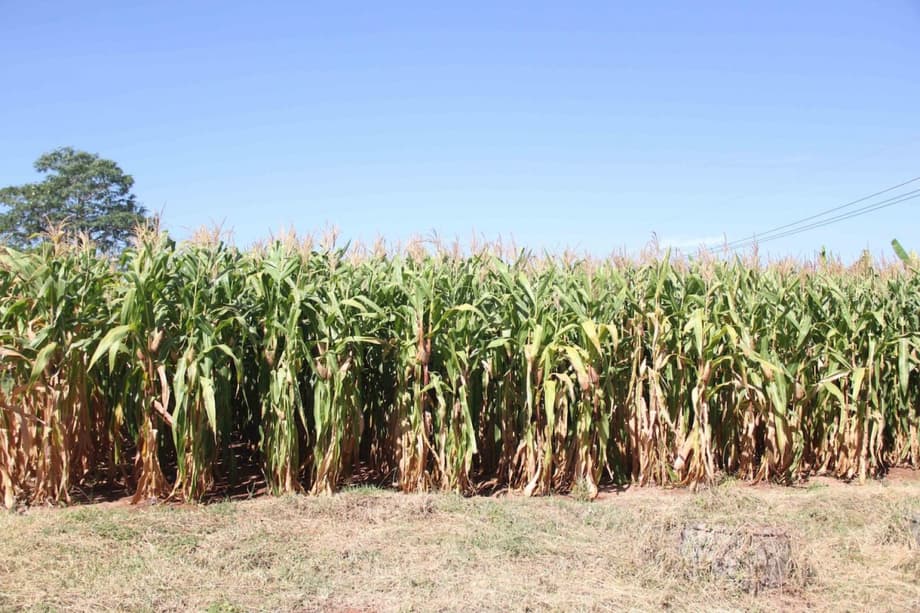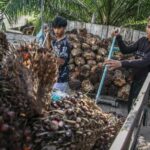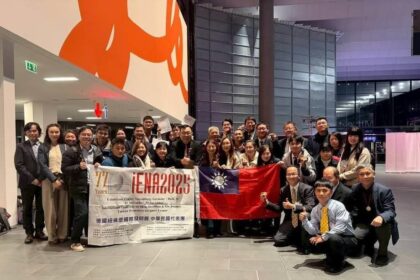What the Cabinet Approved
Thailand has moved to secure feed grain supplies and ease cost pressures by opening a large, time limited quota for United States corn at a zero tariff. The cabinet approved imports of up to 1 million tons of feed corn from the United States between February 1 and June 30, 2026, lifting the quota far above the previous allowance of 54,700 tons that carried a 20 percent duty. The policy is linked to ongoing tariff talks with Washington and is paired with rules meant to keep local growers in the market.
- What the Cabinet Approved
- Why it Matters for Feed and Food Prices
- Protecting Farmers: The 3 to 1 Rule and a Narrow Window
- Clean Air Rules Are Reshaping Corn Sourcing
- Winners, Losers and Regional Trade Shifts
- What Importers and Feed Mills Must Prepare
- Market Outlook and Price Dynamics
- Politics and Policy Debate
- Soybean Meal and the Broader Feed Basket
- Voices From the Government
- The Bottom Line
Thailand consumes about 9 million tons of corn each year for animal feed. The country typically imports 4 to 5 million tons to fill the gap left by domestic production. Officials said the new quota helps secure raw materials for feed mills at a time when livestock production and feed demand are rising. A 3 to 1 purchase rule remains in force. For every ton of imported corn, feed mills must buy three tons of locally grown corn. The import window avoids the main harvest in the final quarter of the year, a design intended to reduce pressure on farm gate prices.
The cabinet also approved soybean meal imports from 11 importers for 2026 to 2028 at a 2 percent duty. That decision broadens the supply base for one of the most important protein ingredients in feed. Both steps fit within a wider strategy to balance trade commitments with protecting farm incomes and keeping food prices stable for consumers.
Why it Matters for Feed and Food Prices
Feed is the largest cost in producing chicken, pork and eggs. Corn is a core energy ingredient, while soybean meal supplies protein. When input prices fall, processors can hold down or cut retail prices. When costs rise, consumers often feel it at the meat counter. The zero tariff quota, concentrated in a window before local harvesting, gives mills the option to bring in large volumes of competitively priced corn when domestic supply is tight. That can smooth seasonal price spikes that have affected feed makers in recent years.
Global corn markets tend to move with harvests in the United States, Brazil and Argentina. Currency swings and freight rates also matter for delivered costs in Southeast Asia. A defined arrival period in early 2026 gives mills time to plan tenders and freight. If import prices are attractive, mills can blend imported and domestic corn to achieve targeted feed formulations while still meeting the 3 to 1 domestic purchase requirement. The result should be steadier input costs for poultry and pig producers, sectors that anchor Thailand’s food exports and its domestic protein supply.
Officials have signaled that trade concessions with the United States aim to support broader economic goals. A stronger supply chain for feed can help keep farms operating through cost shocks and assist exporters as external demand shifts. A narrower import window is a key feature, so mills will need to manage inventory carefully through the second half of the year when local grain becomes more available.
Protecting Farmers: The 3 to 1 Rule and a Narrow Window
The expansion comes with guardrails. Policymakers retained the 3 to 1 domestic purchase rule to keep demand under Thai corn growers. This requirement ties import volumes directly to local procurement, serving as a buffer for farm incomes when a large quota opens to overseas supplies. The import calendar is also set to avoid the main harvest in the final quarter. That timing is meant to keep local prices from dipping during the season when farmers bring in most of their crop.
How the Quota Works
Thailand has long combined tariffs and quotas to manage feed grain imports. Under the previous framework, only 54,700 tons of corn could enter at a duty, with higher taxes outside the quota. The new policy lifts the quota to 1 million tons and drops the duty to zero for that volume. The duty cut matters because even small tariff changes can swing the economics of bulk grain shipments. Large buyers, such as integrators with feed mills and livestock operations, can then lock in supply while satisfying domestic purchase rules.
Inside the government there has been debate over the balance between market access and farm support. Senior officials backed the quota to give the feed sector breathing room on costs. The agriculture minister recorded a formal objection and pushed for a shorter import period to reduce any risk to local prices. The cabinet adopted the shorter window from February through June. The prime minister instructed agencies to prepare assistance and stabilization measures for growers who might be affected, including price support projects, marketing programs and production improvement schemes for the 2025 to 2026 season.
Clean Air Rules Are Reshaping Corn Sourcing
Thailand is also tightening environmental rules on corn imports. Beginning January 1, 2026, feed mills must show proof that imported corn comes from burn free sources. The requirement is part of a campaign to cut seasonal haze that affects northern Thailand and Bangkok, much of it linked to agricultural burning across borders. The new rule places a premium on supply chains that can verify that fields were not cleared or managed by burning.
Duangarthit Nidhi-u-tai, a deputy director general at the Department of Foreign Trade, explained the new standard at a recent briefing. He said the government will accept several forms of proof during a transition period while the Clean Air Act is finalized.
Feed mills will have to present proof that imported corn is from burn free sources beginning January 1, 2026.
During the initial phase, certification may be provided by importers, government agencies in exporting countries or recognized international bodies. Once Thailand’s clean air law is in force, documentation standards will tighten and violations could lead to temporary bans for importers. The policy targets slash and burn farming methods common in parts of Myanmar, Laos and Cambodia. Those countries have been major suppliers of feed corn to Thailand. The new rules are expected to shift import flows toward sources that can document burn free practices, including the United States and other large exporters.
Winners, Losers and Regional Trade Shifts
The policy mix of a large zero tariff quota and burn free certification is likely to reorder Thailand’s sourcing. United States suppliers stand to gain from both moves. American corn has deep export infrastructure, ample inspection protocols and established documentation systems. That makes compliance with verification rules more straightforward. Mexico, Argentina, India and Pakistan could also benefit where certification can be credibly provided.
Some regional suppliers may lose share unless they can prove that fields are managed without burning. Corn shipments from Myanmar, Laos and Cambodia have often arrived during seasonal gaps in Thai supply. If new limits are enforced, traders will need to reorganize origin networks, invest in traceability or shift to other commodities. The end result will be more costly documentation for some exporters, but cleaner air for Thailand if burning declines along the border region.
Thai feed mills and integrators are clear beneficiaries. Access to sizable volumes during a tight season gives buyers negotiating power and risk management options. Farm groups, on the other hand, worry that cheaper imports could weigh on prices, especially if stocks remain high into the third quarter. Government measures such as the 3 to 1 rule, targeted price support and market expansion programs are designed to cushion those pressures.
What Importers and Feed Mills Must Prepare
Compliance is central to unlocking the benefits of the new quota. Importers will need to document three areas with care. First, domestic procurement records that demonstrate the 3 to 1 purchase ratio. Second, certification that corn cargoes are burn free beginning January 2026. Third, sanitary and phytosanitary paperwork that meets Thai requirements, including inspection and quality parameters for moisture, foreign material and mycotoxins.
Supply chain planning will also be critical. The import window is just five months. That means buyers must schedule tenders, shipping and discharge slots carefully. Voyage times from the United States Gulf or Pacific Northwest to Southeast Asia can run several weeks. Contracts may need clauses that specify arrival windows, laytime and penalties to ensure cargoes clear customs within the quota period. Coordination with port operators and customs officials will lower the risk of delays that could push arrivals outside the window.
Traceability is another focal point. Traders may draw on identity preserved systems, rail or barge documentation, and farm origin records to confirm burn free compliance. Where certification is provided by exporting country agencies, importers should confirm procedures and audit rights. Clear documentation chains will protect buyers if disputes arise once the Clean Air Act tightens verification rules.
Market Outlook and Price Dynamics
By setting a large, predictable window for duty free imports, Thailand gives mills a planning anchor. If global supplies are adequate, the quota can cap seasonal price spikes. If world prices climb because of weather or logistics, the quota still creates an option value. Buyers can compare domestic offers with landed prices for United States corn and switch depending on price and quality. That competition helps moderate costs for the feed sector.
Feed demand in Thailand is projected to grow to around 21.8 million tons this year, up from an estimated 21.1 million tons in 2024. About 60 percent of the country’s feed ingredients, mostly corn, soybean meal and wheat, are imported. The mix of ingredients can shift when relative prices move. If corn is tight, mills can raise the share of feed wheat where nutrition and formulation allow. If soybean meal becomes more affordable, rations can adjust protein levels. The soybean meal decision at a 2 percent duty is relevant here, since it shapes the cost of the protein side of the ration.
Currency is another variable. If the baht weakens, landed import costs rise even with a zero tariff. If the baht strengthens, imported grain becomes more attractive. Freight rates can also swing with vessel supply and bunker fuel costs. The policy framework does not determine these variables, but it does add flexibility to manage them.
Politics and Policy Debate
The cabinet decision reflects a balance of trade goals and domestic politics. The agriculture minister objected to the larger quota on grounds that it could harm farmers. He urged a shorter import period to reduce pressure on local prices, and the cabinet accepted the tighter February to June window. The prime minister directed agencies to prepare support for growers, including price stabilization and production programs for the 2025 to 2026 season.
Trade talks with the United States have provided the backdrop. Thai officials have sought to maintain market access for exports while keeping farm incomes stable. The expanded corn quota and the soybean meal duty decision were presented as part of broader tariff discussions. Policymakers also linked environmental standards to trade, aiming to clean up seasonal air while channeling imports toward suppliers that meet higher documentation standards.
Soybean Meal and the Broader Feed Basket
Soybean meal sits alongside corn in almost every Thai feed mill. The cabinet approval for soybean meal imports from 11 companies at a 2 percent duty for 2026 to 2028 supports a key protein input. When protein is cheaper, mills can refine rations to hit growth targets at lower cost. Poultry integrators, in particular, are sensitive to shifts in protein prices, which influence breeding, growth rates and final yields.
Thailand’s feed sector is diverse, serving broiler, layer, swine, aquaculture and dairy producers. Each segment fine tunes feed formulas based on price and nutritional needs. A more predictable flow of corn and soybean meal, backed by clear rules, helps mills plan purchases and manage inventory. The combined effect should support steadier output across the livestock sector.
Voices From the Government
Officials have stressed that the quota expansion is paired with safeguards. Government spokesperson Siripong Angkasakulkiat said the measures form part of talks with the United States and emphasized the domestic purchase rule.
Importers will have to buy three parts of local corn for every part imported.
On the environmental side, trade officials said verification will be central to the new standard. Duangarthit Nidhi-u-tai of the Department of Foreign Trade outlined the requirement that will apply from the start of 2026. He said certifications will be accepted from multiple trusted sources during a transition period, after which the rules will tighten under a clean air law.
The Bottom Line
- Thailand approved up to 1 million tons of United States feed corn at a zero tariff for arrivals from February 1 to June 30, 2026.
- A 3 to 1 rule requires mills to buy three tons of Thai corn for every ton they import.
- New burn free rules for imported corn take effect on January 1, 2026, with stricter verification expected once a clean air law is in place.
- Most of Thailand’s current corn imports come from nearby countries that use field burning, so sourcing is likely to shift toward suppliers that can document clean practices.
- Soybean meal imports for 2026 to 2028 were approved at a 2 percent duty through 11 importers.
- Feed demand is rising, and about 60 percent of feed ingredients are imported, so stable supply chains are critical for prices and food security.
- The cabinet shortened the import window to protect local prices and ordered support programs for farmers.












